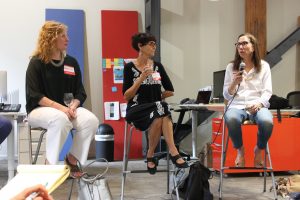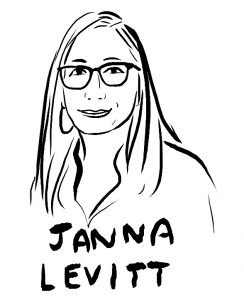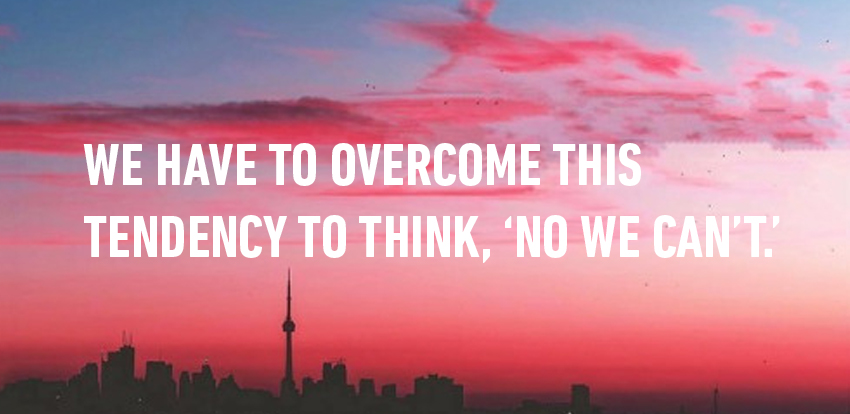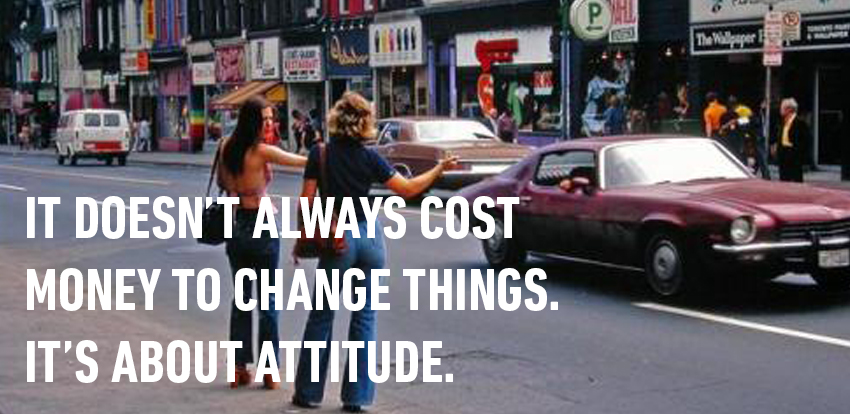
Diversity may be Toronto’s strength, but we’re going to need some much bigger thinking on the part of city leaders if we’re going to use that might to build a better city, at least according to the panel convened at our latest CoPilot event, RC Harris is My Co-Pilot, which took place at our offices last Thursday.
Inspired by city-builder RC Harris, the early-20th-century works commissioner largely responsible for turning a provincial capital into a city ready to play a role on the world stage, we were trying to explore the story of a city: how the narratives we form about a city shape how we build it. Appropriately enough, one of the key metaphors to emerge in our discussion of what Toronto needs for the future involved Harris’s revolutionary approach to the Bloor viaduct. The famous project was not just a major public endeavour, it was one that was famously forward-thinking: tasked with building a car bridge over the Don Valley, Harris also included the necessary infrastructure for a subway to run underneath it. What resulted was not just an edifice that inspired the city for years to come, but grew up with it.
The panel, consisting of Sharon Avery, President and CEO of the Toronto Foundation, Janna Levitt, architect and partner at LGA, and Donna Gabaccia, professor of history at the University of Toronto and president of The Ward Museum, began by praising the relatively recent drive by the city to embrace the wide swath of perspectives that have always been part of Toronto, but haven’t always been celebrated.

Levitt noted that considering lived experience was crucial to city-building — not just considering the experts and powerful voices that so often dominate urban thinking and planning, but paying attention to what the people who live in the city are saying, even if only through the ways they live in the city. Levitt noted that we needed to actually reflect these experiences not just by listening, but in actually designing the city to accommodate them, in everything from polyglot way-finding signage to colours that reflect cultural differences.
Gabaccia went even further, noting that something as essential as public transit infrastructure was essential to a meaningful public dialogue: peoplethat cannot actually get across a city to see each other’s communities or talk about their shared experiences, after all, are not likely to have much of an opportunity to meaningfully engage with ideas outside their own communities and neighbourhoods. “We don’t just need to give people a platform, we need to really sit down and listen to what people have to say,” she pointed out.
As it so often does, consideration of public transit sparked a discussion about some of the ways in which the high-level vision of Toronto has too often gotten mired in small details: value-engineering takes the place of thoughtful consideration of what a city can actually do, as audience member Ken Greenberg put it in his comments from the crowd.

For her part, Avery dreamed of getting Toronto’s leaders to sign a “Raise our taxes” pledge, similar to the one that 40 of New York’s richest people sent to their state government, committing themselves to funding public services. As leader of the Toronto Foundation, which helps organize philanthropic activity, Avery recognizes the vital role it can play, but noted it was no substitute for proper civic leadership: “[Philanthropists] are looking for a vision they can get behind,” she noted. “It doesn’t always cost money to change things. It’s about attitude.”

On that count, at least, our panelists found plenty of reason for optimism. Gabaccia pointed to the growing appetite for bold vision and public involvement among the city’s younger generation, pointing to things like the Yes In My Backyard movement. Levitt admires the goals of Toronto’s Tool Library, which isn’t just about giving people access to goods and services, but instilling an ethic of sustainability and longevity in our consumerist culture.
That kind of shift — in attitude, not just about specific projects or places — seemed to resonate with the crowd. “Right now, we have a ‘can’t’ attitude,” noted one of our audience members. “We should be asking, ‘Why not?’”
Why not dream a little bigger? That’s a sentiment we’re pretty sure RC Harris could get behind.
What do you think? How will the stories we tell ourselves in the future shape the way our city changes and grows? Drop us a note or tweet at us @PilotPMR.

